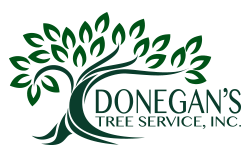The Carbon and Nutrient Markets: What’s In It For You?
By Robert Banner
There’s a revolution going on in the conservation world. Driven by a sense of urgency to create cleaner air and water, trees have risen to the top of solutions that improve both. Seems too simple, doesn’t it? In fact, science demonstrates that the leaves of trees pull a remarkable amount of carbon dioxide from the air through photosynthesis. As well, their root structures filter agricultural runoff that would otherwise find its way into river systems and out into the bays, creating growing dead spots.
The solution trees offer is so effective and efficient that a reward system is quickly emerging to benefit landowners who plant new forests. It behooves any landowner to consider the opportunity, especially those under a conservation easement. The programs that grow the trees are generally consistent with the language of nearly all conservation easements. It is not only approved, but often encouraged.
Approved programs will generate carbon credits for cleaning the air. As well, approved programs in Virginia will generate nutrient credits for cleaning the water, too — all from the same stand of trees. These credits are considered the new “currency” of conservation producing a financial incentive for landowners to help keep our world clean. This is the emerging intersection of conservation and commerce.
The trees do their work and credits are generated. Who buys the credits? How much are they worth? How could you participate in a program? The answer is a detailed one, but for the sake of understanding, we can focus on the bigger picture. If this makes sense, I am available to demystify the detail. To begin, let’s separate the carbon and nutrient credit markets for a minute.
Nutrient first. In 2005, the Virginia Department of Environmental Quality (VDEQ) began a nutrient trading market to improve the health of the Bay because 80% of the problem creating the dead spot is caused by agricultural runoff from over fertilized fields. In the Bay, the fertilizers do the same thing they do on land, grow plant life (algae). The algae proliferates, dies and consumes oxygen in the process creating the dead spot.
The VDEQ decided strategically placed trees would filter the runoff. They created the credit reward system as a way to value the endeavor. Every property is valued by its sensitivity to the river system feeding the Bay. The credits sell to developers who must buy them before having their projects permitted. Every region is valued differently, but we can quickly tell you how much credits created on your land may bring.
Now Carbon. As the trees grow larger, it is a sign that their leaves have pulled in CO2, stored the C (carbon) in the growing basal area (tree trunk) releasing the O2 back into the air. For approved programs, independent registries measure and verify the growth. Carbon credits (often known as offsets) are calculated, attributed to our aggregate programs, and sold to companies looking to offset their carbon footprint. Our company plants the trees, manages their growth and sells the offsets to large corporate entities all on behalf of our partnership with you, the landowner.
As the credits are sold, we make distributions splitting the revenue with you, the partnering landowner. Founded in 2005, our GreenTrees is now the largest reforestation program in the world by credit issuance. We manage more than 120,000 acres growing more than 42 million trees for more than 550 partnering landowners. We sell the credits to Shell, Duke Energy, United Airlines, and more. Between the sale of nutrient credits at the beginning of your tree’s life and the carbon credits created over a 40-year span, the emerging market makes growing trees at scale increasingly attractive.
As a customer of Donegan’s Tree Service, you are already doing the right thing by valuing your trees. At scale, your endeavors to create more forest may provide even more reward. You have likely heard about the emerging carbon or nutrient trading markets. If now is the time to expand your knowledge and commitment, I can help you to understand what’s in it for you and welcome a call from anyone who wants to learn more. Like the growing list of partners we help, you may be glad that you did.
Robert Banner is the Senior Project Officer of ACRE Investment Management in The Plains, VA, and can be reached at rob@acre-investment.com, or (c) 540-729-1335.

